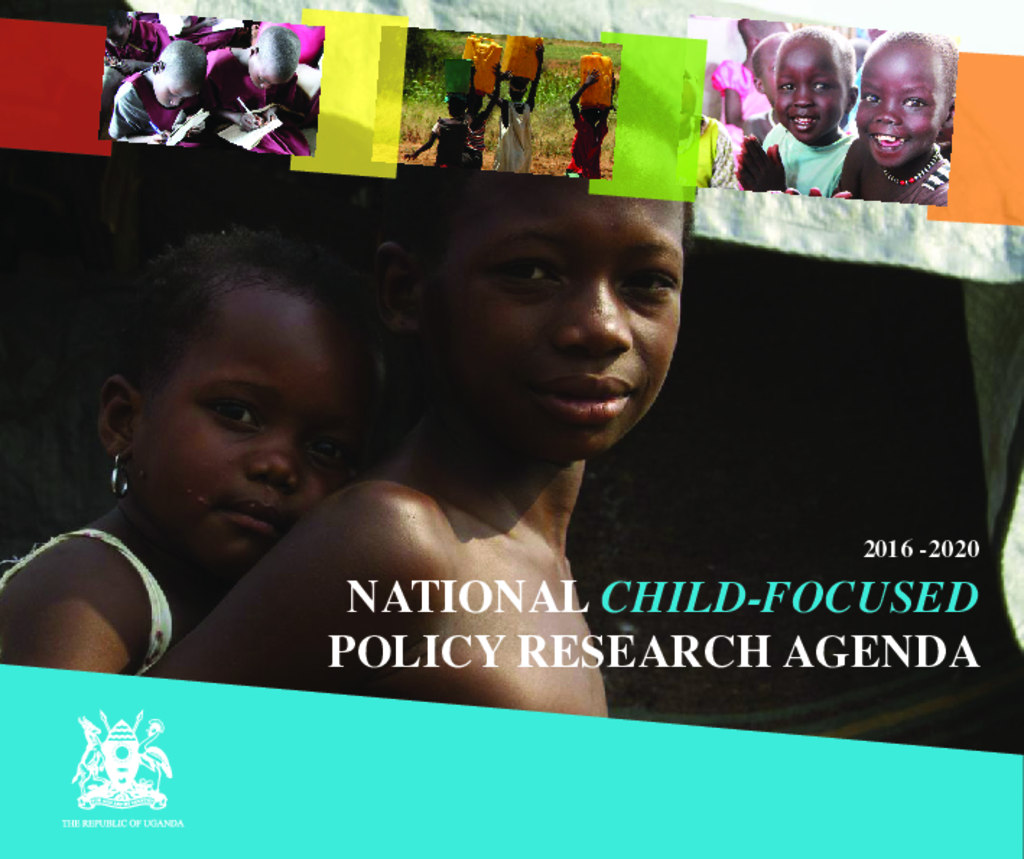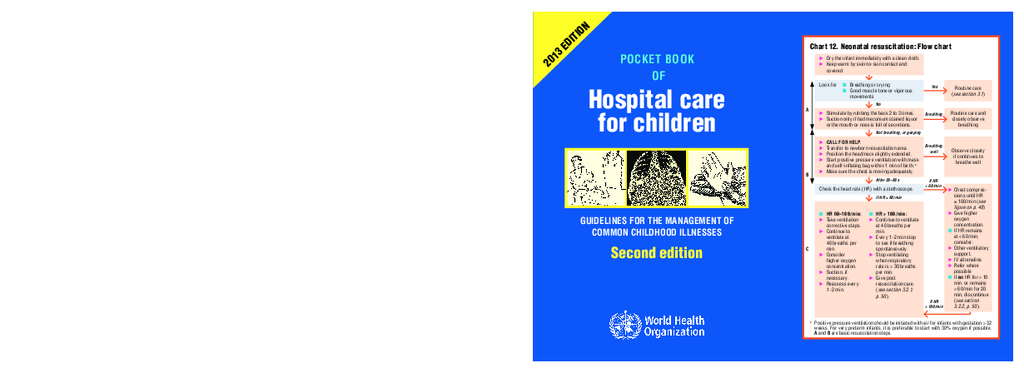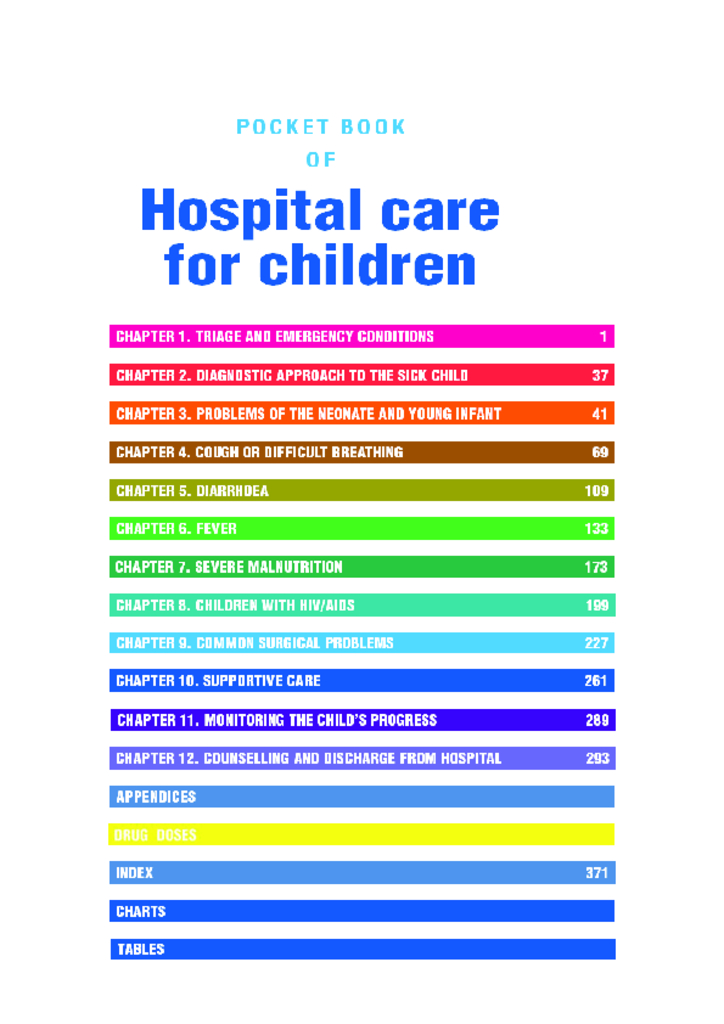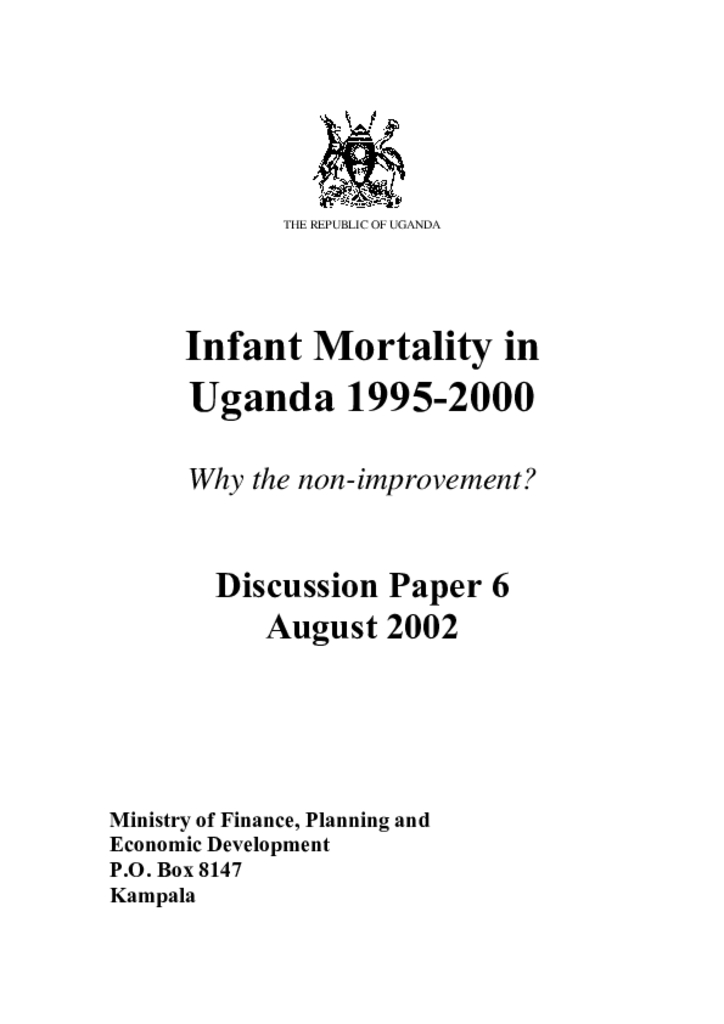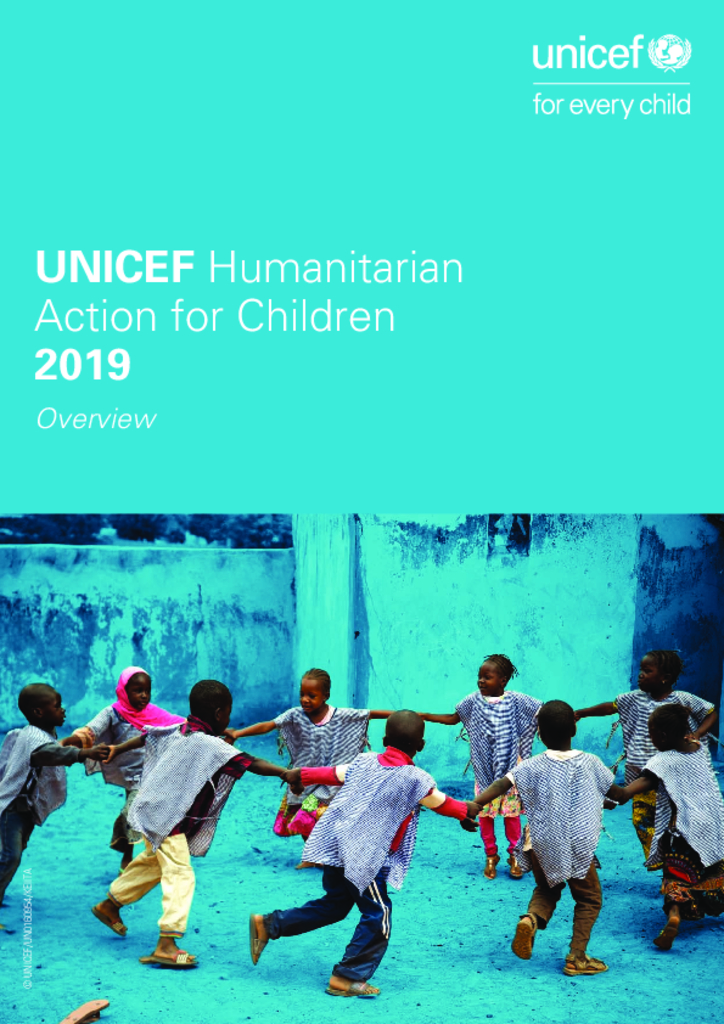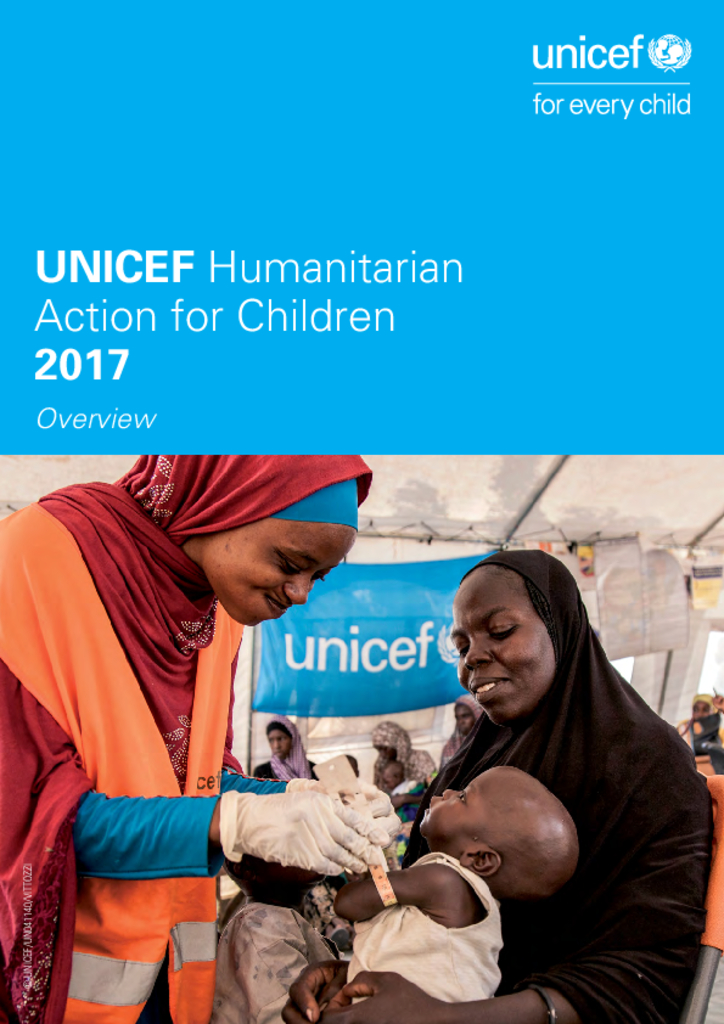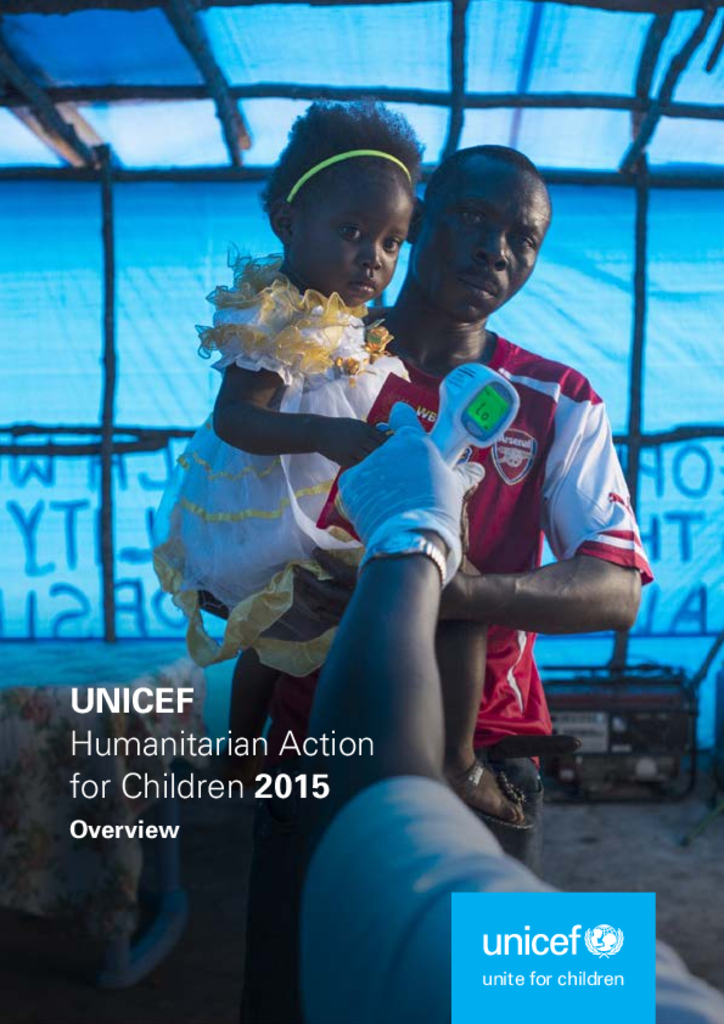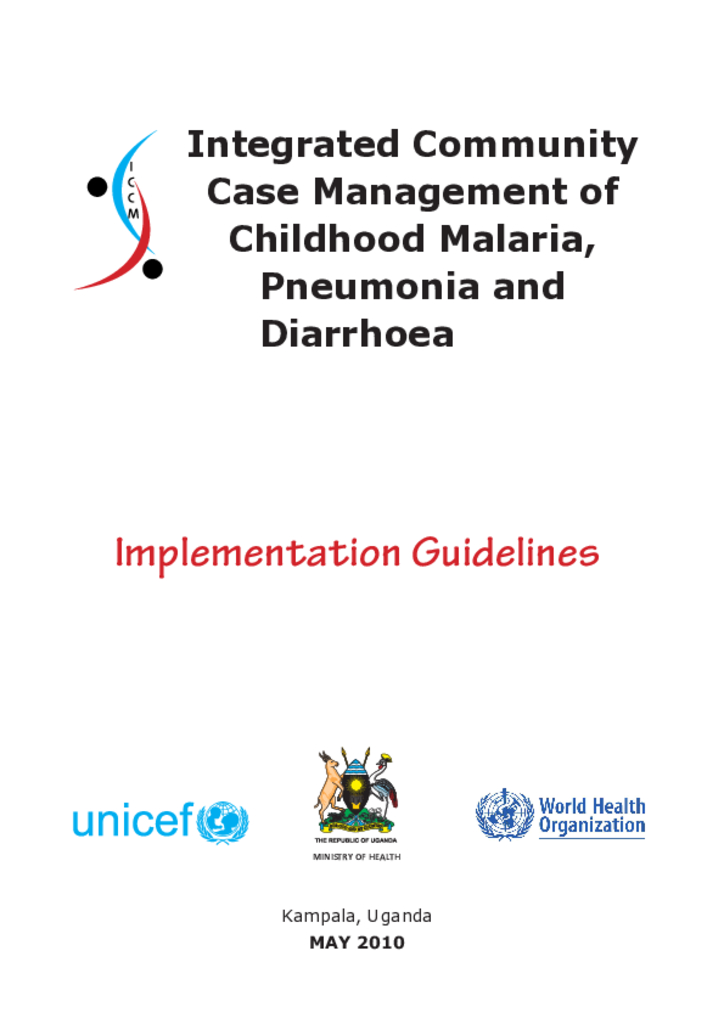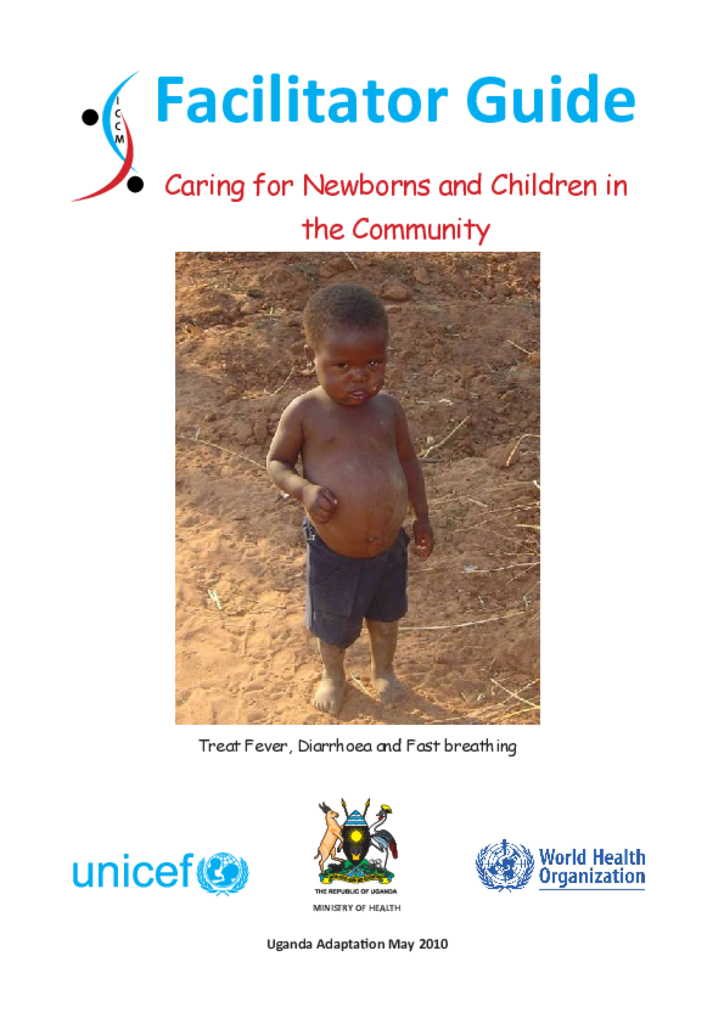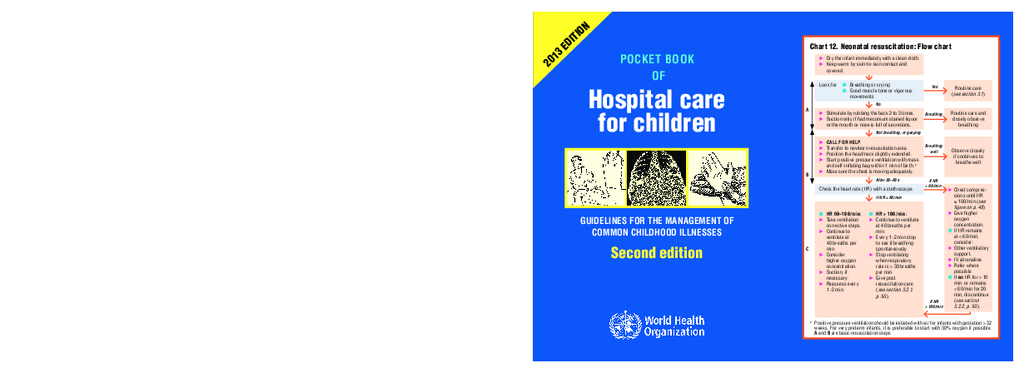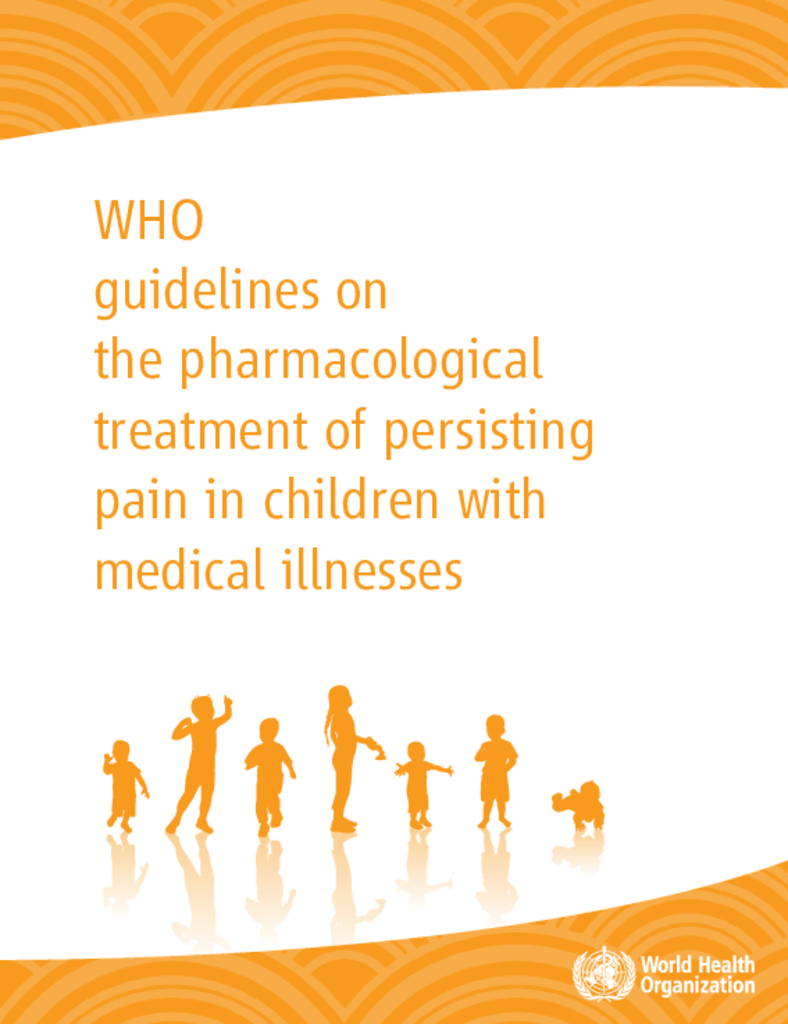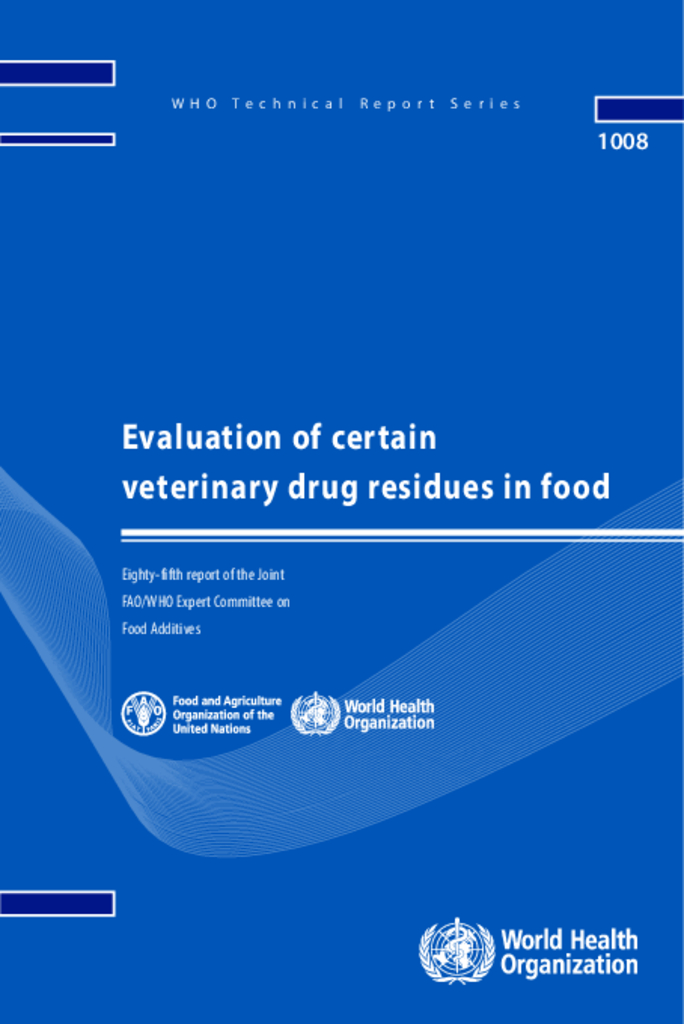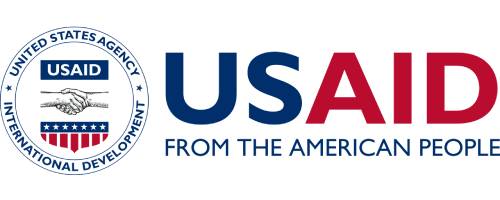With more than 56% of the population below 18 years of age, and over 78% under the age of 35, Uganda’s vision of becoming a middle-income country by 2040 remains highly contingent on the Government’s ability to safeguard its children’s right to contribute to national development.
The Pocket book is part of a series of tools for improving the quality of care for severely ill children and is consistent with the Integrated Management of Childhood Illness (IMCI) guidelines for outpatient management of sick children. It is for use by doctors, senior nurses and other senior health workers who are responsible for the care of young children at the first referral level in developing countries.
This pocket book is for use by doctors, senior nurses and other senior health workers who are responsible for the care of young children at the first referral level in developing countries. It presents up-to-date clinical guidelines which are based on a review of the available published evidence by subject experts, for both inpatient and outpatient care in small hospitals where basic laboratory facilities and essential drugs and inexpensive medicines are available. In some settings, these guidelines can be used in the larger health centres where a small number of sick children can be admitted for inpatient care.
Infant mortality is an important indicator of the successful implementation of the Poverty Eradication Action Plan (PEAP). This is because the level of infant mortality is a consequence of a broad range of Government interventions.
Violence against children takes many sinister forms. In homes, schools, communities and online around the world, it manifests itself in debilitating physical and emotional abuse. In humanitarian emergencies – especially those driven by relentless armed conflicts – violence can result in death, serious injury and lasting trauma. An insidious sort of violence also affects children when humanitarian emergencies deprive them of health, nutrition, water and sanitation, education and other basic needs.
That is the number of children living in countries affected by emergencies -- one out of every four children in the world today. From relentless conflicts and displacement crises in the Lake Chad basin, South Sudan, the Syrian Arab Republic and Yemen … to the impacts of El Niño or La Niña in southern Africa … to the devastation of seasonal storms and other disasters in Haiti, humanitarian crises are threatening the lives and futures of more children today than perhaps any other time in history.
The year 2014 was one of sharp contrasts for the world’s children – posing new challenges for UNICEF’s work to improve their lives and emphasizing the critical necessity of investing in heir resilience, before, during, and after emergencies. In November, we marked the 25th anniversary of the Convention on the Rights of the Child and the remarkable progress that has been made for children over the last quarter century. There is much to celebrate: A child born today has a far better chance than a child born in 1989 to survive and thrive, to learn and grow, to participate and contribute to society.
This document is to guide policy makers, managers, districts, health workers, communities, NGOs and all other stakeholders on how to implement integrated community case management (ICCM) of childhood malaria, pneumonia and diarrhea to reduce under mortality and take actions to introduce, implement, monitor and evaluate ICCM at all levels of health services delivery chain.
It explains about what will take place during the entire training. It indicates which activities are to be done, who to do them, and when to be done
The Pocket book is presented in a format that could be carried by doctors, nurses and other health workers during their daily work and be available to help guide the management of sick children. Although some new topics have been added, standard textbooks of paediatrics should be consulted for rarer conditions not covered in the Pocket book. These guidelines are applicable in most areas of the world and may be adapted by countries to suit their specific circumstances.
Pain in children is a public health concern of major significance in most parts of the world. Although the means and knowledge to relieve pain exists, children’s pain is often not recognized, is ignored or even denied. These guidelines address the pharmacological management of persisting pain in children with medical illnesses. As such, they replace the previous guidelines, Cancer pain relief and palliative care in children, which exclusively covered cancer pain. They include several clinical recommendations, including a new two-step approach of pharmacological treatment. The guidelines also point to the necessary policy changes required and highlight future priority areas of research
The Joint FAO/WHO Expert Committee on Food Additives (JECFA) met in Geneva from 17 to 26 October 2017. The meeting was opened by Dr Kazuaki Miyagishima, Director of the Department of Food Safety and Zoonoses of the World Health Organization (WHO), on behalf of the directors-general of WHO and the Food and Agriculture Organization of the United Nations (FAO).
